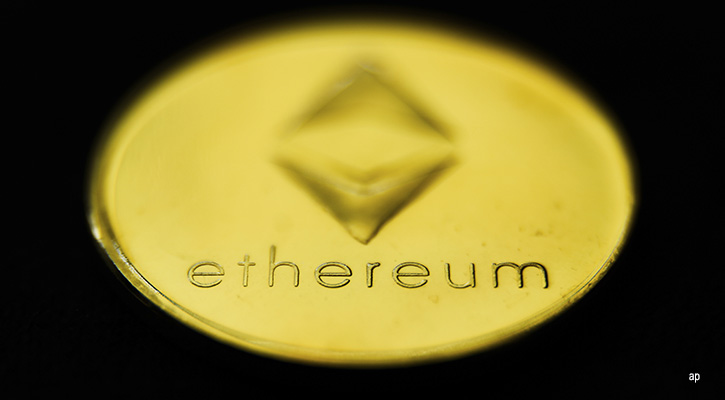
As a publicly traded company operating under the watchful eye of US regulators, Coinbase (COIN) is the most prominent of the “compliant exchanges”, a position that has come to benefit the exchange as the cryptocurrency industry matures and regulators become more active.
Cryptocurrency exchanges typically take on a broader role than traditional exchanges (such as Nasdaq or CME Group), acting as broker, exchange, and asset custodian. Coinbase is no exception, as the firm fulfils many roles in its operations and has continued to expand the breadth of its scope through acquisitions and internal investment.
Asset custody in particular remains a key point of concern for users of smaller exchanges and decentralized financial services, as demonstrated by the theft (and subsequent return) of over $600 million of cryptocurrency from the DeFi service Poly Network, and Coinbase’s security track record remains a key feature of the firm.
Here are a few ways that Coinbase differs from traditional financial exchanges, and what that means for investors.
It Also Acts as an Asset Custodian
Coinbase and other cryptocurrency exchanges differ from other US exchanges in that they often act as a crypto asset custodian as well as exchange—a role they have assumed to sidestep the technical limitations of most current blockchain networks. Accounts registered on a blockchain network are referred to as “wallets” and moving cryptocurrency from one wallet to another can take minutes or even hours if the network is congested.
So, Coinbase’s system sees that users transfer their cryptocurrency to the exchange before they begin trading. Since both ends of the trade are on Coinbase’s platform, the coins involved never leave Coinbase’s wallet. Coinbase merely notes the trade internally and keeps the transaction off the blockchain until one of the traders withdraws assets from the exchange. It’s only when crypto assets come or go from the platform that a transaction is logged to a blockchain network, allowing for free cryptocurrency trading without the delays or costs associated with blockchain networks.
While acting as an asset custodian solves the transaction speed issue, it also makes the exchanges a prime target for theft, as users are handing billions of dollars in assets to new firms with limited operating histories and cyber security experience.
The cryptocurrency exchange industry’s track record as an asset custodian is poor, with billions in client funds being stolen, even without taking the historical price appreciation of the stolen coins into account. This is an ongoing concern for cryptocurrency investors as the risk remains ever-present. Even if no hack occurs, funds can still be stolen.
Still, Coinbase presents itself as a safe place to engage with the cryptocurrency economy, and the company is seen as a reliable firm in the cryptocurrency space. Given that trading at a cryptocurrency exchange implies placing your trust in that firm’s ability to safeguard your funds, Coinbase’s reputation as a safe haven is a valuable intangible asset that supports the exchange’s premium pricing.
In the future, new blockchain networks and scalability solutions, like the lightning network for Bitcoin, could improve transaction speeds and erode the need for exchanges to act as custodians, potentially reducing the competitive advantage of well-established exchanges like Coinbase. However, it is likely that this model for the exchanges has become too engrained to be disrupted, and many users likely don’t wish to take on the responsibility of maintaining their assets’ security with private wallets.
It Has a Brokerage and Separate Pricing for Retail and Institutional Users
Since few brokerage firms were historically willing to handle cryptocurrencies, Coinbase and other cryptocurrency exchanges have come to establish direct relationships with their end users.
Trading on a traditional exchange has historically been reserved for a select group of members and those who trade through those member firms. In contrast, Coinbase offers membership and trading capabilities to anyone who opens an account with the firm and completes identity verification. As a result, Coinbase has a direct connection with its retail traders and intangible assets like brand recognition, customer service, and marketing play a role in the firm’s success.
This carries even more weight due to the firm’s heavy reliance on retail traders as its primary source of revenue, as shown on the chart below, despite the presence of significant institutional trading on its platform.
That said, institutions still make up the majority of Coinbase’s volume and their share has grown over the last couple of years.
The disparity between institutional traders’ revenue contributions and their volume is a direct result of the exchange’s fee structure. Coinbase’s price structure heavily features volume discounts for active traders. This structure has the benefit of building a strong institutional presence of high-volume traders that transact at a low fee rate.
Coinbase does charge a premium fee for retail users, even when compared with its peers, but competition hasn’t forced Coinbase to significantly decrease its fees.
While Coinbase has yet to experience meaningful fee compression, it is undeniable that the exchange's current fee structure is lucrative. In our view, it is very likely that Coinbase will see its average fees come down over time. However, for now the company does not chase volume through price competition, instead focusing on increasing its breadth of service offering and utilizing the strength of its brand and security track record.
Additionally, we would caution investors to take a holistic view when reviewing Coinbase’s results for signs of price compression. With so many tiers to Coinbase’s price structure, average fees can vary for reasons that have nothing to do its competitive position, such as increase institutional trading volume leading to a shift in the company’s mix.
Its Revenue is Highly Correlated to the Performance of Crypto
Coinbase’s trading fees are primarily calculated as a percent of the underlying trade value, unlike the structure of Nasdaq or CME Group. As a result, unlike traditional U.S. exchanges that can often be agnostic to the direction of their underlying markets, there is a clear correlation between Coinbase’s trading revenue and cryptocurrency performance.
Coinbase’s cyclicality is further driven by the ebb and flow of investor interest in cryptocurrency. Cryptocurrency is a speculative space and few firms or individuals maintain an ongoing allocation to the asset class.
As a result, the number of retail users actively trading on Coinbase can vary widely from quarter to quarter and typically follows the price performance of the cryptocurrency market.
So too does Coinbase’s trading revenue, an exposure that is magnified by Coinbase’s heavy reliance on transactional revenue. Like other exchanges, Coinbase has sought to build more subscription-based revenue streams through both acquisitions and internal investment. The company offers cryptocurrency collateralized loans, institutional custodial services, marketing services for up-and-coming cryptocurrencies, and “staking” services for its investors (a service in which an investor exchanges liquidity for additional cryptocurrency).
There is room for staking and other recurring revenue streams to grow. But with less than 5% of its revenue coming from recurring sources, Coinbase will remain a transactional-driven firm for the foreseeable future, leaving its returns tightly tied to cryptocurrency market events.
Both Sides of the Coinbase
It is this deep reliance on the growth and health of cryptocurrency, still a new and uncertain asset class, that drives our no-moat rating for Coinbase. Coinbase does appear to have some of the basic building blocks of a moat rooted in switching costs, network effects, and intangible assets.
Liquidity pooling, a desire for safety, and the ability to offer related services has led Coinbase to grow while simultaneously fending off fee compression. Additionally, we believe that Coinbase established a good competitive position and that recent regulatory trends have largely confirmed the prudence of its investments in compliance, leading to strong returns on invested capital in recent quarters.
However, the long-term longevity of the industry is still not guaranteed. Significant underlying risk remains that these returns could end suddenly if confidence and interest in cryptocurrencies disappears or if government acquiescence of cryptocurrency shifts into open hostility. A severe decrease in cryptocurrency prices, like the one in 2018, could also lead to much lower earnings or even losses. In our view, the risk of a material decay in the company’s competitive position is too great to award it a narrow or wide moat rating.



























